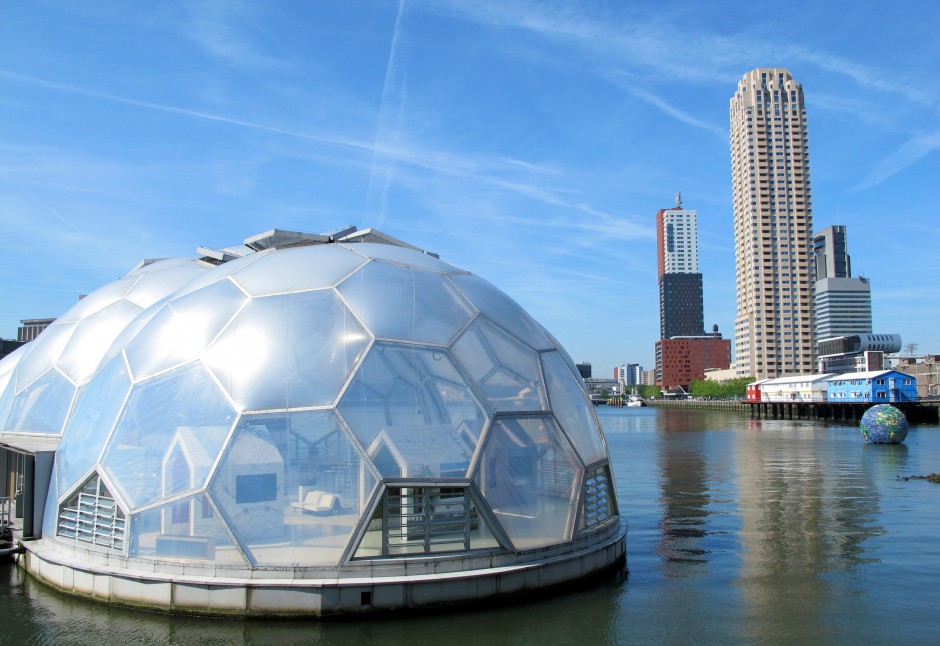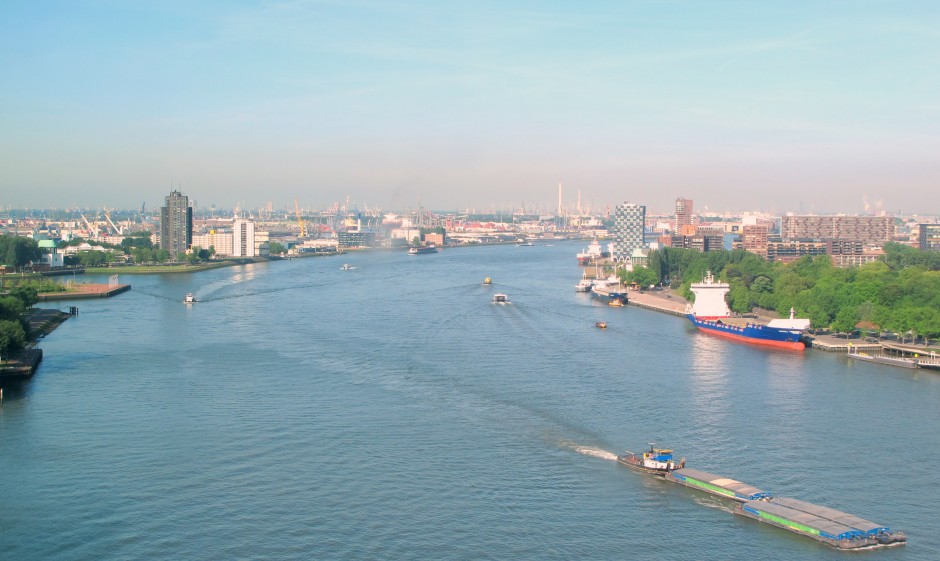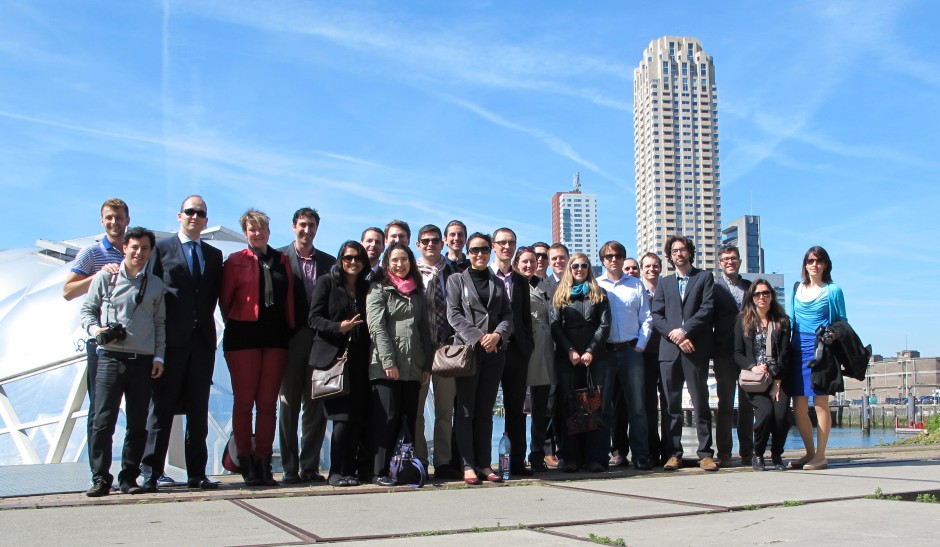Emerging Leaders in Environmental and Energy Policy (ELEEP) fosters transatlantic relations, forges dialogue, and promotes leadership across energy and environmental policy landscapes. Former EGU Science Communications Fellow and ELEEP member Edvard Glücksman reports back from the Netherlands, where citizens manage the continuous threat of climate-related devastation through a combination of creatively adapted urban spaces and innovative new technologies.
In late January 1953, a storm over the North Sea wreaked havoc, causing one of the most devastating natural disasters that Northern Europe has ever seen. The surge of seawater overwhelmed coastal defences, causing extensive flooding along the Belgian, British, and Dutch coastlines.
The infamous North Sea Flood claimed roughly 2,500 lives, and damaged or destroyed tens of thousands of houses. In the Netherlands, where roughly 70% of the nation’s territory lies at or below sea level, the flood submerged over 1,300 km² of the country’s territory, destroying around 10% of agricultural land and crippling its economy.
Climate-proofing with blue solutions
The nation’s history of flooding has shaped urban design and construction initiatives across the Netherlands. This trend is particularly striking in the Dutch city of Rotterdam, which lies in a delta roughly 7 m below sea level and is vulnerable to flooding from both seawater and heavy rain. Its complex system of dikes and seawalls have a one-in-10,000 years chance of breaking, high enough for the city to take pioneering steps towards developing sustainable water management practices in preparation for the most extreme future climate scenarios.
In the offices of the Rotterdam Climate Initiative (RCI), Lissy Nijhuis, Project Manager at Rotterdam Council, depicts the city’s climate adaptation strategy as one that has recently grown to embrace ‘blue solutions’ – mitigation strategies that allow humans to protect themselves against potential catastrophic flooding events, while continuing to live with and enjoy water.

- The Watersquare Benthemplein plaza discretely weaves flood management systems into the city’s urban landscape. (Credit: Edvard Glücksman)
According to Nijhuis, these new solutions contrast starkly with conventional approaches, which rely on separating humans from water using the most robust and resilient physical barriers available.
The blue solutions approach means that, in recent years, the RCI has adopted a long-term strategy of ‘climate-proofing’ the city by subtly adding water management infrastructure to standard urban maintenance and redevelopment activities. Nijhuis explains that this is most effectively achieved by developing first with a practical, beautiful outcome in mind, and working backwards to adjust it to particular flooding mitigation requirements.
To that end, we visited the city’s notorious Watersquare Benthemplein pilot project, a water plaza that doubles as a flood buffer during heavy rainfall, pooling water from surrounding streets and thus relieving the most immediate pressure on public drainage systems. The construction, seven years in the making and used during our visit as a basketball court by school children, is a prime example of Rotterdam’s understated but highly effective water mitigation strategy. Other similar examples – built to reduce pressure on drainage sites in times of severe flooding – include car parks that double as water storage units and the presence of absorbent green roofing on houses.
Halving emissions by 2020
Earlier this year, ELEEP visited Hamburg and witnessed first-hand the city’s commitment to transforming previously flooded and industrial areas into hubs for the development of green architecture and urban regeneration. Likewise, the Drijvend Paviljoen (Floating Pavilion) lies at the heart of Rotterdam’s mission to climate-proof itself in a sustainable manner.
Comprising three connected, floating hemispheres, anchored within the city’s old harbour, the Floating Pavilion serves as a pilot project within Rotterdam’s ambitious plan to construct a future community of floating homes. The pavilion floats on a 2.5 m-thick layer of polystyrene, which allows for construction directly on the water and is made of materials that are hundreds of times lighter than those used in conventional buildings. The roof, for example, is made of a triple-layer of foil, filled with pressurised air that insulates and keeps the building warm.
The solar-powered Floating Pavilion is a showpiece within Rotterdam Municipality’s goal of halving energy consumption and CO2 emissions in housing by 2020. It also allows stakeholders to better understand the potential challenges involved in drastically altering the city’s urban landscape, including for example how to interpret the city plan when the harbour areas becomes living quarters virtually overnight.

- Rotterdam’s Drijvend Paviljoen (Floating Pavilion), a pilot in climate-proofing infrastructure. (Credit: Edvard Glücksman)
Rotterdam’s port is by far the city’s most prominent industrial feature. Europe’s largest and busiest port, it covers an area of 5,299 hectares and shifts nearly 12 million cargo containers per year. It also hugely impacts Europe’s energy landscape, serving as the northwestern European hub for the arrival, production, and distribution of conventional and renewable energy. The port, which has a capacity of nearly 7,000 megawatts, powers nearly a quarter of the industry and homes in the Netherlands. At the same time, twice as much electricity will be generated by other power plants in northwestern Europe as a result of coal, biomass, and natural gas imported via Rotterdam.
In a broad-ranging talk, Ruud Melieste, an economist within the Corporate Strategy Department at the Port of Rotterdam, explains the pressures faced by the port as it strives to improve sustainability credentials. Important, he explains, is the global complexity within which EU energy issues must be understood, and the pressures faced by power, chemical, and refining industries as cheaper alternatives, such as US shale gas, are found elsewhere.
In response, Melieste offers three potential future scenarios for Rotterdam and the rest of northwestern Europe. The first, known as the ‘power’ scenario, focuses on maintaining the domination of fossil fuels through large-scale, centralised energy generation. In this scenario, big countries and companies determine future events. A second option is the ‘fusion’ scenario, which focuses on maintaining a diverse portfolio of stakeholders and solutions, and aims to gradually alter the economy towards sustainable energy use, while using shale gas as a transition fuel. The third, ‘unlimited’, scenario is based on radical innovations and the acknowledgement that climate change is a truly pressing problem. Here, the transition to renewables is seen as an economic opportunity, driven by decentralised energy systems. The Port of Rotterdam is prepared, according to Melieste, for the possibility that any of these three scenarios could play out. The one most likely to emerge, however, remains unknown.

- Ruud Melieste, economist for the Port of Rotterdam, explains the dimensions of Europe’s busiest port. (Credit: Edvard Glücksman)
Although the basic idea behind Dutch climate protection strategies has persisted for over half a decade, the sites we visited in Rotterdam demonstrate that the city’s climate adaptation portfolio is slowly changing from a “dry feet at all costs” approach to one of integrative water management, where the duties associated with climate protection and the pleasures of urban space can more freely mix. The city and its port are central features in the supply of energy, water, and food to much of northern Europe. As a result, its pioneering climate-proofing efforts are in future likely to affect millions of European citizens, ensuring that extreme weather events, such as the storm of 1953, can be mitigated in the most sustainable and least invasive way possible.
By Edvard Glücksman, Associate Research Fellow, Environment and Sustainability Institute, University of Exeter
ELEEP is a collaborative venture between two non-partisan think tanks, the Atlantic Council and Ecologic Institute, seeking to develop innovative transatlantic policy partnerships. Funding was initially acquired from the European Union’s I-CITE Project and subsequently from the European Union and the Robert Bosch Stiftung. ELEEP has no policy agenda and no political affiliation. Edvard’s current project is funded by the European Social Fund.







Brittany@GreenGlobalTravel
Climate protection strategies are always an interesting read. As Melieste said, it’s very important for people to understand the energy issues at hand. I found the community of floating homes to be especially interesting. Thank you!